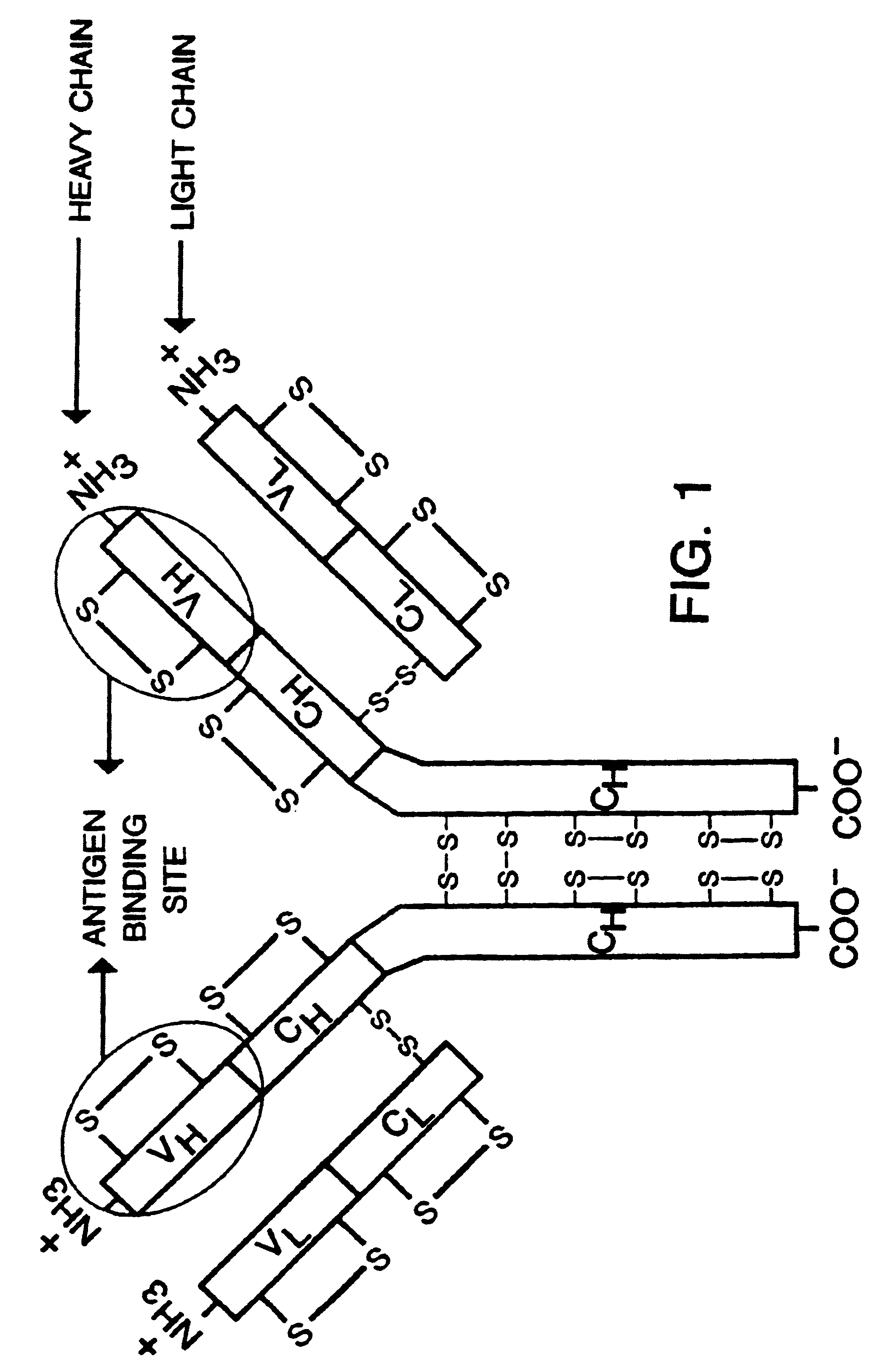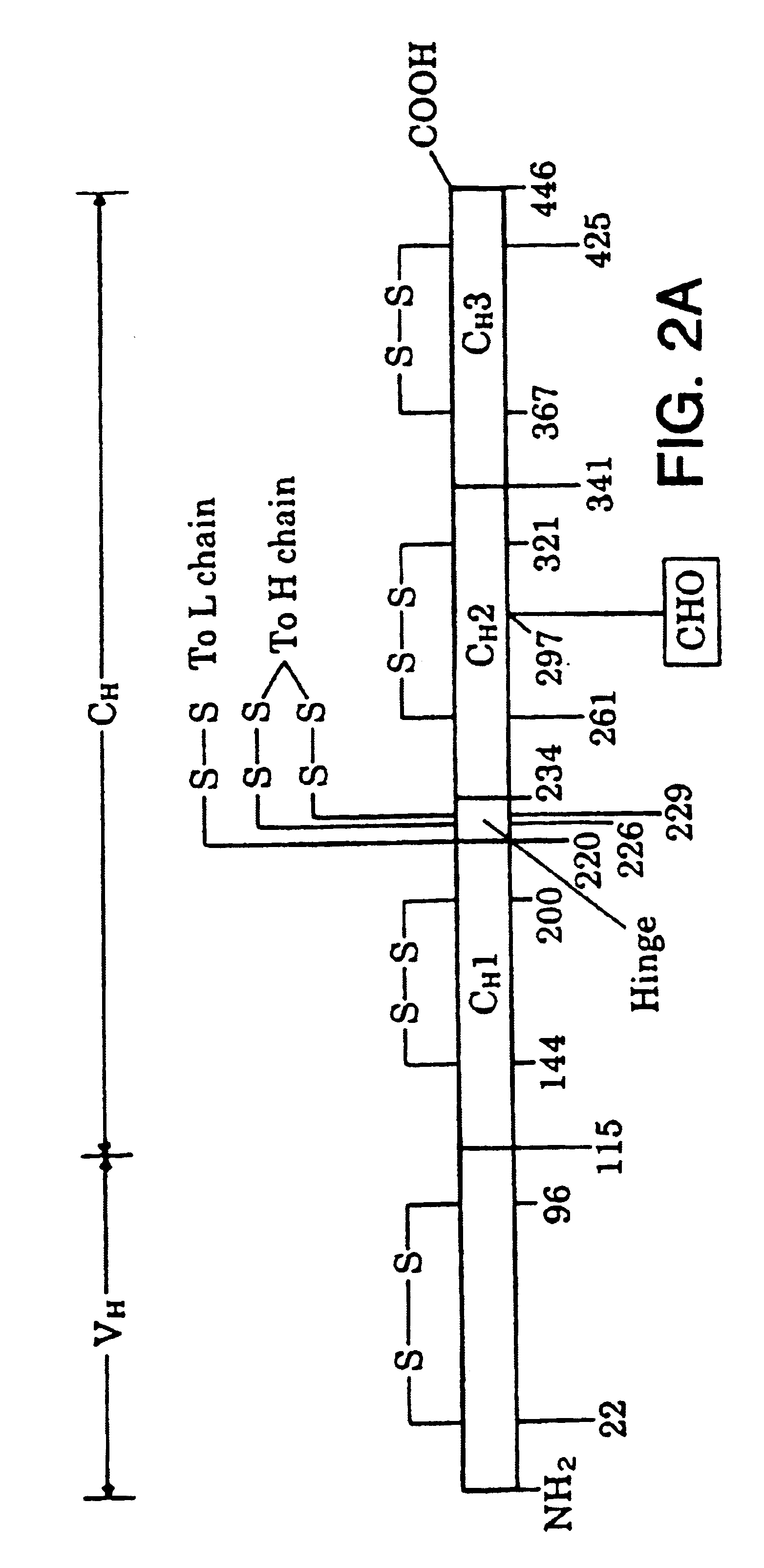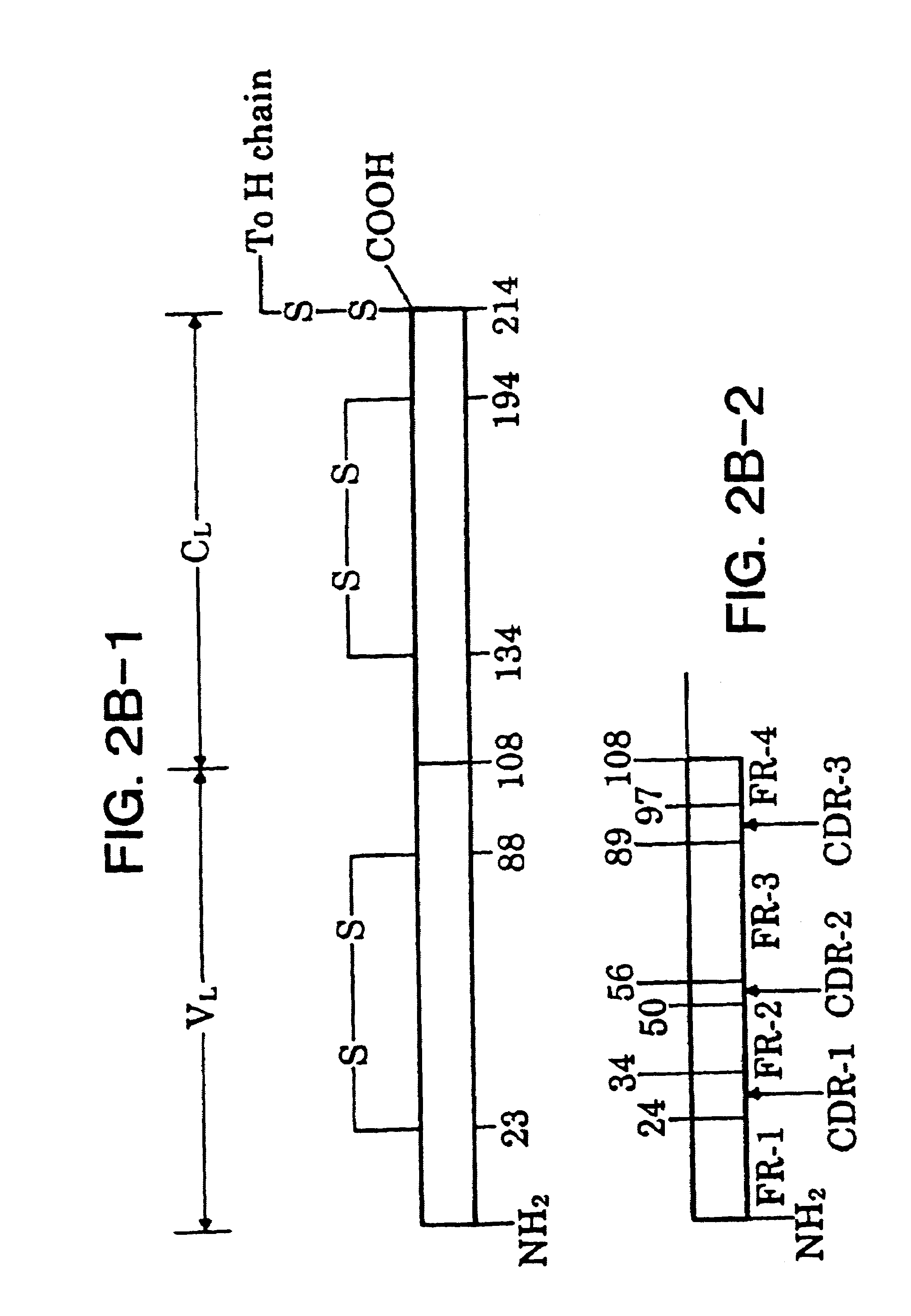Heterodimeric receptor libraries using phagemids
a technology of heterodimeric receptors and phagemids, which is applied in the field of cloning vectors, can solve the problems of no expression system, no membrane anchor requirement for functional assembly, and little knowledge about the changes that are tolerated
- Summary
- Abstract
- Description
- Claims
- Application Information
AI Technical Summary
Benefits of technology
Problems solved by technology
Method used
Image
Examples
examples
[0320]The following examples are intended to illustrate, but not limit, the scope of the invention.
1. Construction of a Dicistronic Expression Vector for Producing a Heterodimeric Receptor on Phage Particles
[0321]To obtain a vector system for generating a large number of Fab antibody fragments that can be screened directly, expression libraries in bacteriophage Lambda have previously been constructed as described in Huse et al., Science, 246:1275–1281 (1989). These systems did not contain design features that provide for the expressed Fab to be targeted to the surface of a filamentous phage particle.
[0322]The main criterion used in choosing a vector system was the necessity of generating the largest number of Fab fragments which could be screened directly. Bacteriophage Lambda was selected as the starting point to develop an expression vector for three reasons. First, in vitro packaging of phage DNA was the most efficient method of reintroducing DNA into host cells. Second, it was p...
PUM
| Property | Measurement | Unit |
|---|---|---|
| temperature | aaaaa | aaaaa |
| temperatures | aaaaa | aaaaa |
| temperatures | aaaaa | aaaaa |
Abstract
Description
Claims
Application Information
 Login to View More
Login to View More - R&D
- Intellectual Property
- Life Sciences
- Materials
- Tech Scout
- Unparalleled Data Quality
- Higher Quality Content
- 60% Fewer Hallucinations
Browse by: Latest US Patents, China's latest patents, Technical Efficacy Thesaurus, Application Domain, Technology Topic, Popular Technical Reports.
© 2025 PatSnap. All rights reserved.Legal|Privacy policy|Modern Slavery Act Transparency Statement|Sitemap|About US| Contact US: help@patsnap.com



